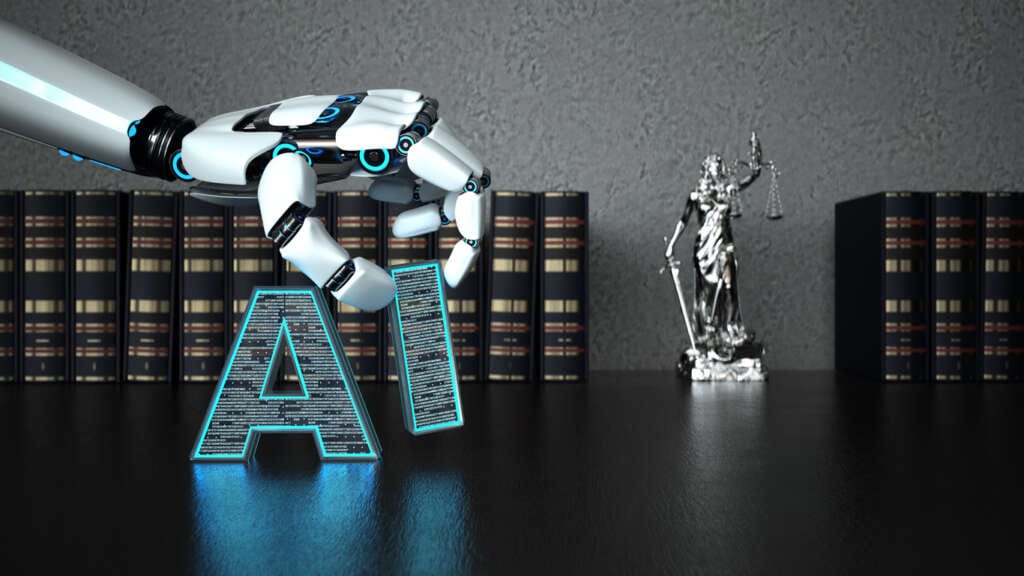

It’s difficult to conceive of algorithms within our legal systems making decisions that directly affect our lives. Such a notion sounds like it could have sprung from a science fiction movie, however, automation in the sense of artificial intelligence is now in use in legal realms, both in the judiciary sense and in the context of corporate governance, risk and compliance (GRC).
Legal tech is used extensively across courts, lawyers and internal legal departments to automate and expedite processes. Indeed, without it, the legal backlog would undoubtedly be larger. Such technology reduces the time spent on repetitive tasks as well as improving process management across multiple clients and multiple matters.
As consumers, we’re already adapting the use of this technology. So-called access-to-justice applications to reclaim retained costs from airlines involve no direct contact with a lawyer. Or there are apps that can now assist you with writing legal letters where the underlying machine learning software compares one’s own words with a legally correct formulation.AI today
Artificial Intelligence (AI) is now helping this legal technology become more focused. Capable of looking through terabytes, even petabytes, of information and data, sometimes in just a matter of minutes, AI provides much greater insights into the trends and correlations between datasets and datapoints. It can analyse and consider the impacts of factors on a given task or process, identify hidden relationships and predict actions.
To date, AI has been employed in a variety of ways in legal GRC, from translating foreign language documents to the identification of misspellings and classification tasks. Automated workflows in combination with robotics and AI-based deletion are already helping ensure compliance with GDPR, for instance. Once a document is created, such solutions determine how long it should be retained for in accordance with data minimisation policies and if a Data Subject Access Request (DSAR) is made, will ensure this is met within the regulatory timeframe.
AI also has an important role to play in law enforcement. It’s used to sift through large volumes of data for hate crimes on the Internet and to aid in the collection and review of digital forensics. Intelligent algorithms mimic the functioning of a human brain, rather than woodenly processing rules, so that key terms are recognised, and context understood, using sentence structures or word choices. The algorithms are able to learn and refine their understanding of documents and apply smart labels to unreviewed documents, offering a confidence score.
In document review, deep learning algorithms observe human attorneys as they review documents, learning the criteria that make a document relevant to a particular matter. Similarly, concept clusters and communication patterns can be analysed in other legal processes in order to quickly and logically find key facts. Because words and phrases are contextually connected and grouped at speed, the reviewer can swiftly drill down and expose other avenues for investigation hidden within millions of pieces of information.
For example, in early case assessment legal GRC teams are using AI to gain critical insights before collection to save downstream costs on hosting, processing, document review, and production, as well as associated staff time. It’s a process that enables legal teams to get to the facts faster and make comparisons with prior cases and outcomes.
However, we’re only beginning to witness the potential. Going forward, we can expect to see smart technologies used to not just sift through information but to determine what is/isn’t relevant and to learn over time using Machine Learning to deliver informed, intelligent, comprehensive responses before proposing actions.
Cyber legal teams
So, does this mean that a virtual lawyer will represent us in court in the future? Or a robot carry out evidence gathering activities? The jury is still out on that one but what we can expect to see is AI augmenting the human.
The brain is extremely good at recognising patterns but when we are confronted with enormous volumes of “big data”, we reach our limits. A human investigator would have to dig through evidence for days, weeks, or months, with no guarantee of discovering crucial information, and with respect to different cases may not see corresponding links. Therefore, it makes perfect sense to use AI to do the heavy lifting and to crunch the data. A current research project entitled “Legal Analytics” being undertaken by the Bavarian State Ministry, for example, is using an anonymous database of court decisions, the analysis of which could help inform future legal cases.
So where will this take us in the future? It’s doubtful we will see autonomous virtual investigators or robot lawyers. AI doesn’t have the emotional intelligence needed to make the right decisions and there would quite rightly be ethical questions raised. But when it comes to determining the relevance of material and the use of precedent, it is a useful resource with real potential to expedite legal processes and alleviate workloads.
We’re on the cusp of seeing the emergence of ‘virtual partners’, for example, when it comes to data review and processing. These will support the forensic investigator, understanding connections that could sharpen focus and direction and suggesting possible areas that may have been missed. They won’t, of course, be able to replicate human intuition but they will free up the time needed for the human investigator to apply theirs.
The legal sector will need to adapt to this new world and learn how to use the technology, so while we won’t see AI replacing lawyers we will see their job remit changing. AI has the power to curate, advise and orchestrate and in so doing will free up resource, helping lawyers dow hat they do best – interpret and apply the law.


